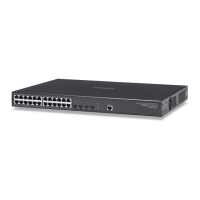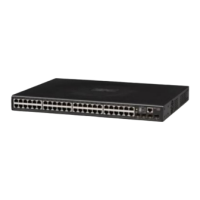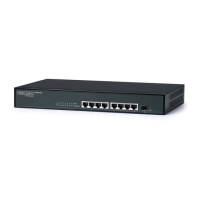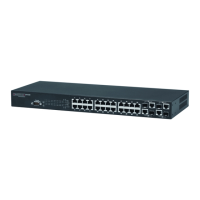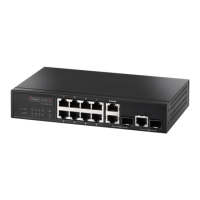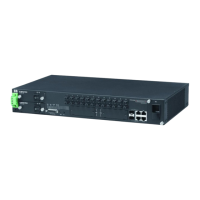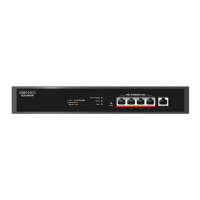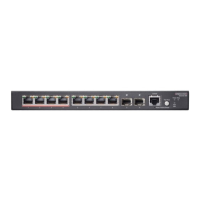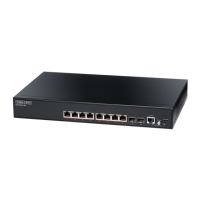C
HAPTER
4
| Configuring the Switch
Quality of Service
– 116 –
CONFIGURING STORM
CONTROL
You can configure limits on broadcast, multicast and unknown unicast
traffic to control traffic storms which may occur when a network device is
malfunctioning, the network is not properly configured, or application
programs are not well designed or properly configured. Traffic storms
caused by any of these problems can severely degrade performance or
bring your network to a complete halt.
You can protect your network from traffic storms by setting a threshold for
broadcast, multicast, or unknown unicast traffic. Any packets exceeding
the specified threshold will then be dropped. Note that the limit specified
on this page applies to each port.
PARAMETERS
The following parameters are displayed on the Storm Control Configuration
page:
◆ Frame Type - Specifies broadcast, multicast or unknown unicast
traffic.
◆ Status - Enables or disables storm control. (Default: Disabled)
◆ Rate (pps) - The threshold above which packets are dropped. This limit
can be set by specifying a value of 2
n
packets per second (pps), or by
selecting one of the options in Kpps (i.e., marked with the suffix “K”).
(Options: 2
n
pps where n = 1, 2, 4, 8, 16, 32, 64, 128, 256, 512; or 1,
2, 4, 8, 16, 32, 64, 128, 256, 512, 1024 Kpps; Default: 2 pps)
Due to an ASIC limitation, the enforced rate limits are slightly less than
the listed options. For example: 1 Kpps translates into an enforced
threshold of 1002.1 pps.
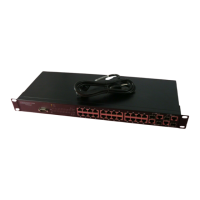
